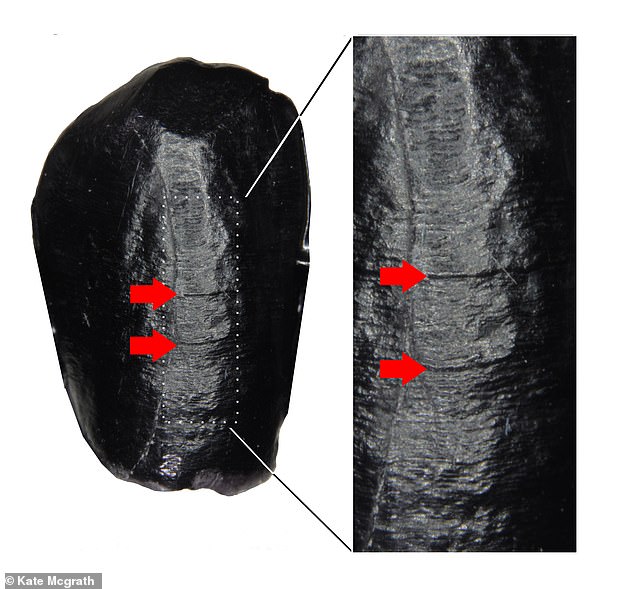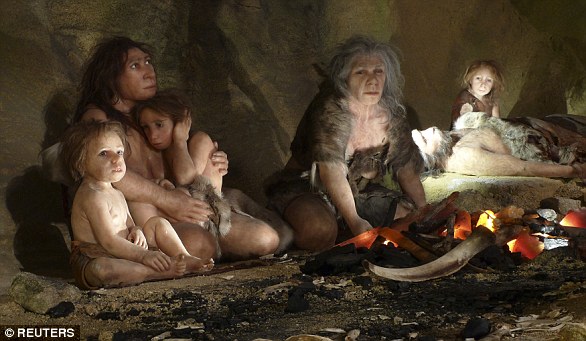- Tooth study indicates humans provided long-term infant care for their offspring
- This could also be one of the reasons why Neanderthals eventually became extinct.
We once lived among Neanderthals, but about 40,000 years ago they disappeared.
The reasons for their disappearance vary, but experts have suggested that interbreeding, climate change and violent confrontations with humans may be to blame.
Now, a new study on teeth indicates that humans provided long-term child care for their descendants, while young Neanderthals may have gained earlier independence.
And this could also be one of the reasons why Neanderthals ended up becoming extinct, according to experts.
Experts say Neanderthal children, who lived between 400,000 and 40,000 years ago, and modern human children who lived during the Upper Paleolithic (50,000 to 12,000 years ago) may have faced similar levels of childhood stress but at different stages of development. .
We once lived among Neanderthals, but about 40,000 years ago they disappeared. The reasons for their disappearance vary, but experts have suggested that interbreeding, climate change and violent confrontations with humans may be to blame (file image)
The team from the University of Tübingen in Germany suggests that these findings could reflect differences in infant care and other behavioral strategies between the two species.
They analyzed the tooth enamel of 423 Neanderthal teeth and 444 human teeth from the Upper Paleolithic.
Horizontal grooves of thinner enamel on teeth indicate early life stress, which previous research has shown may be related to childhood stressors such as illness, infections, malnutrition, nutritional deficiencies and trauma.
The authors found that the overall likelihood of enamel defects was similar in modern human teeth from both the Neanderthal and the Upper Paleolithic, but that the developmental stages at which these defects were likely to occur varied between both species.
Among Upper Paleolithic humans, enamel defects were most likely to occur around the ages at which weaning is estimated to have occurred: between one and three years of age.

A new study on teeth indicates that humans provided long-term child care for their descendants, while young Neanderthals may have gained earlier independence.
Among Neanderthals, however, enamel defects were more likely to peak after the weaning period, suggesting that during this time they were more likely to experience malnutrition.
The authors believe that the stress that Paleolithic human children experienced during weaning could have been caused by an increasing demand for energy.
They propose that Upper Paleolithic humans may have helped reduce developmental stress in children after weaning through strategies such as encouraging prolonged dependence on parents, exploiting resources more efficiently, and providing children with access to food.
Neanderthals may not have used these strategies, they said, which could have contributed to long-term survival advantages for modern humans compared to Neanderthals.
In an article in the journal Scientific Reports, they said humans might have been better at “mitigating stress in newly weaned children.”
Meanwhile, for Neanderthals, the period immediately after the completion of weaning coincides with the “most stressful childhood phase.”
Study author Laura Limmer said: “We are suggesting that modern Upper Paleolithic humans and Neanderthals had different childcare strategies after weaning, and that that of modern Upper Paleolithic humans resulted in better reduction of stress in later childhood.
‘These strategies could not just be support from their parents but could have been related to other social factors.
“Perhaps we would say that Neanderthal children might have gained earlier independence or started to be treated more like adults at an earlier age compared to modern human children.”



